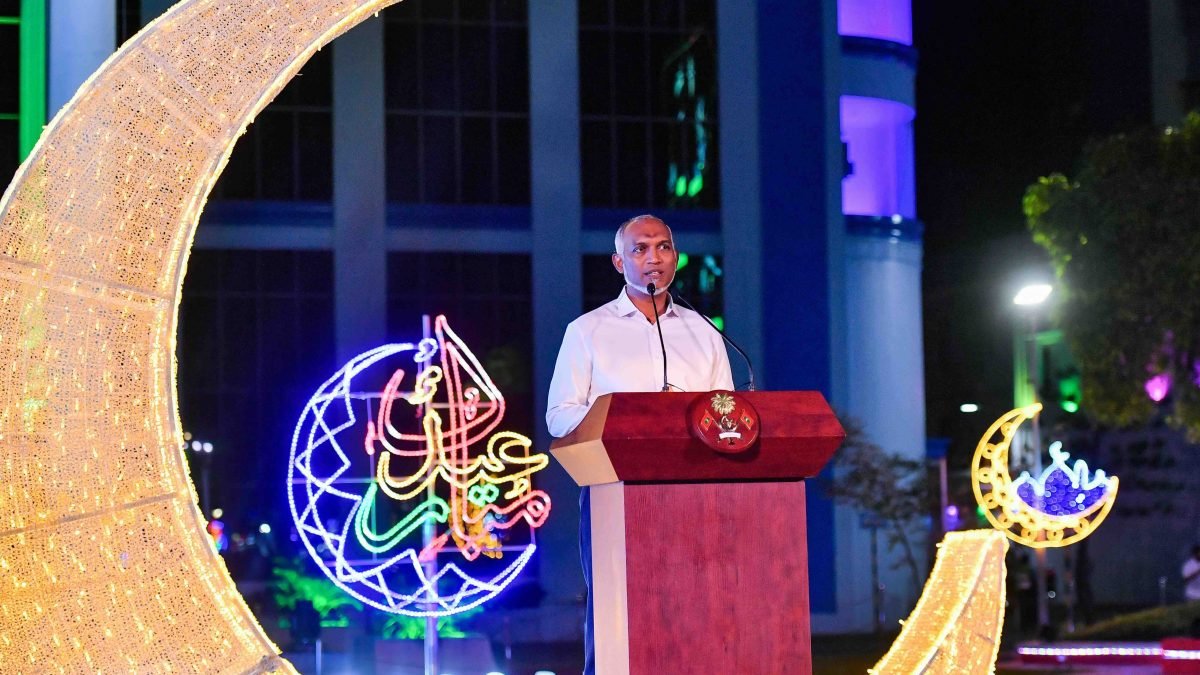The government’s decision to illuminate cities and islands for Eid celebrations has drawn widespread criticism for its perceived extravagance. This move, costing the state MVR 42.19 million, starkly contrasts with previous pledges of fiscal austerity in anticipation of economic challenges.
The Ministry of Cities, Local Government, and Public Works confirmed the expenditure, revealing that the project was exclusively awarded to the State Electric Company Limited (STELCO) without competitive bidding. The initiative, dubbed “Eid Ali”, covered 21 areas, including the capital, Malé, four cities, and atoll capitals, involving the purchase, transportation, and installation of lighting and equipment.
State Minister Ahmed Rasheed disclosed the project’s financial details, noting Fenaka Corporation’s support in installations across the islands. Reports have surfaced of STELCO acquiring the lighting from a Chinese supplier, with sightings of presumed company employees installing fixtures in Malé.
Public scrutiny intensified on social media, with users questioning the reported costs versus the visible equipment. Accusations of “daylight robbery” and misappropriation of funds for political gains ahead of parliamentary elections have surfaced, highlighting a disconnect between the project’s scale and its budget.
The opposition Maldivian Democratic Party (MDP) has condemned the initiative as corrupt, alleging that the expenditure was not sanctioned within the approved state budget. MDP spokesperson and MP Ahmed Easa criticised the quality of the procured equipment and accused the government of financial mismanagement aimed at funnelling funds into the upcoming campaign.
Despite the controversy, the official lighting ceremony took place at Republic Square in Malé, attended by President Dr Mohamed Muizzu and First Lady Sajidha Ibrahim. The Ministry noted that post-Eid, the lighting equipment would be managed by local island and city councils, attempting to lend a semblance of longevity to the contentious project.

